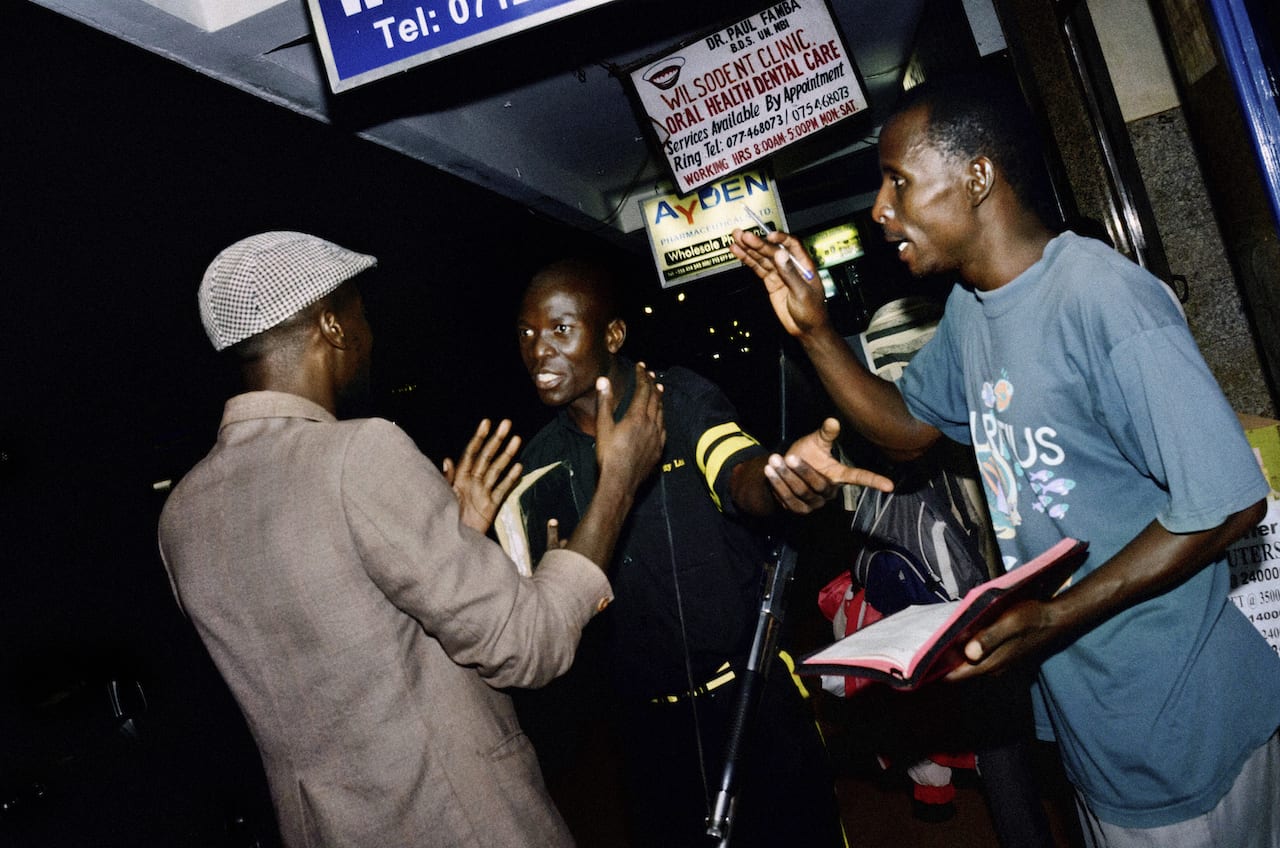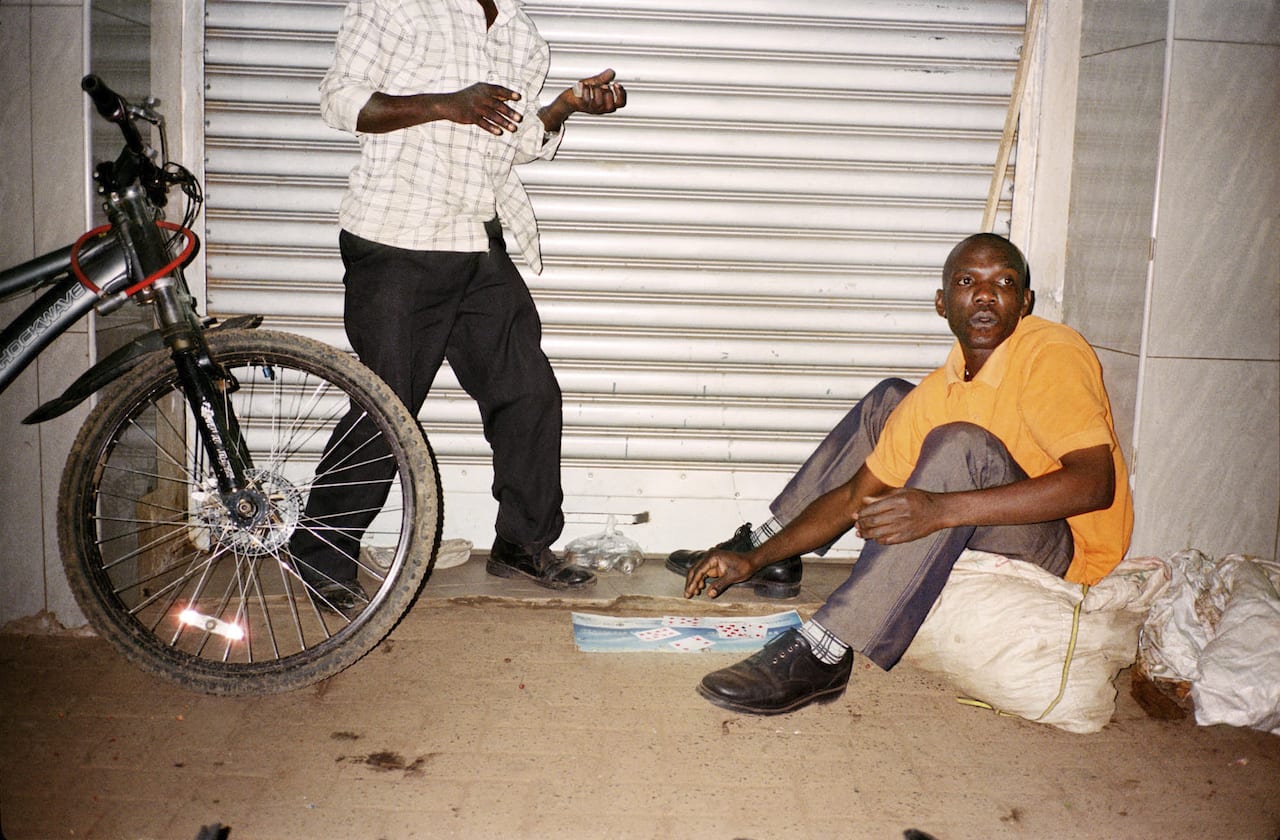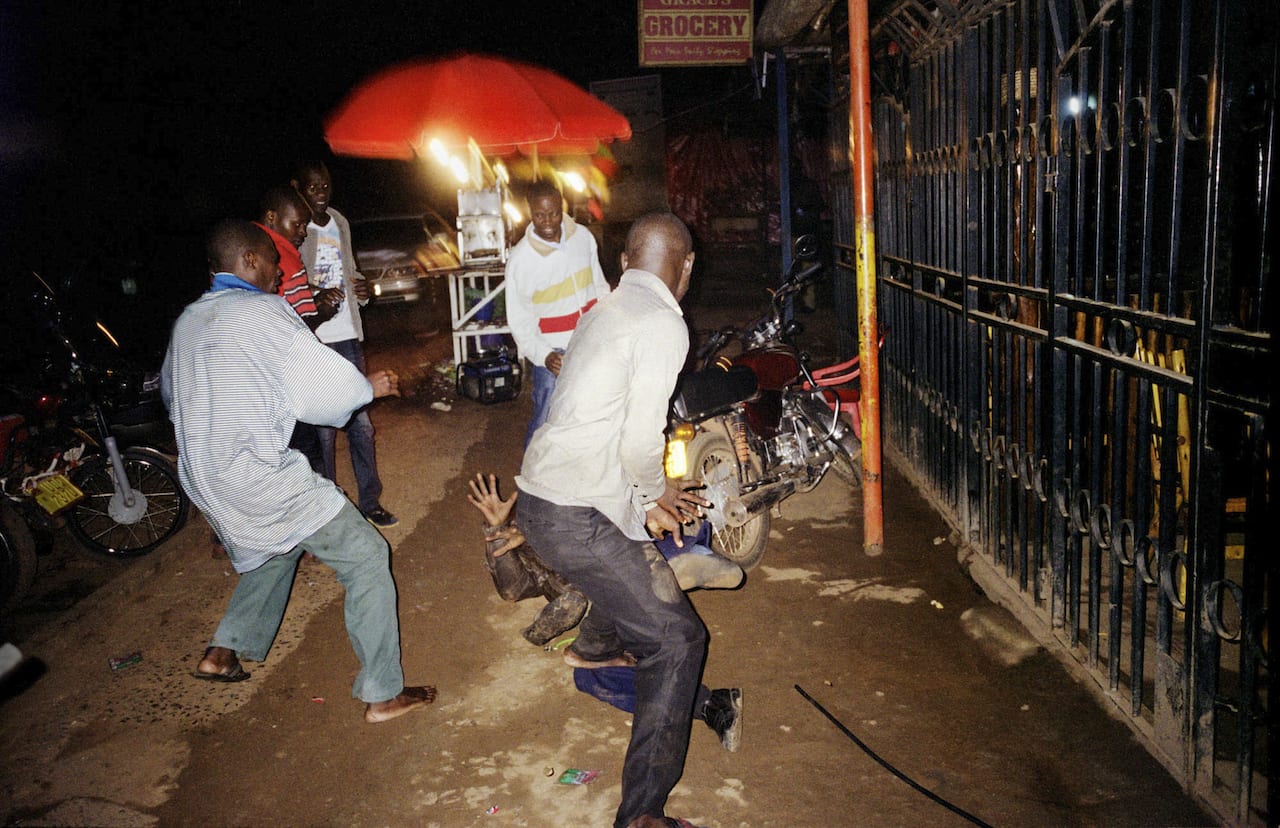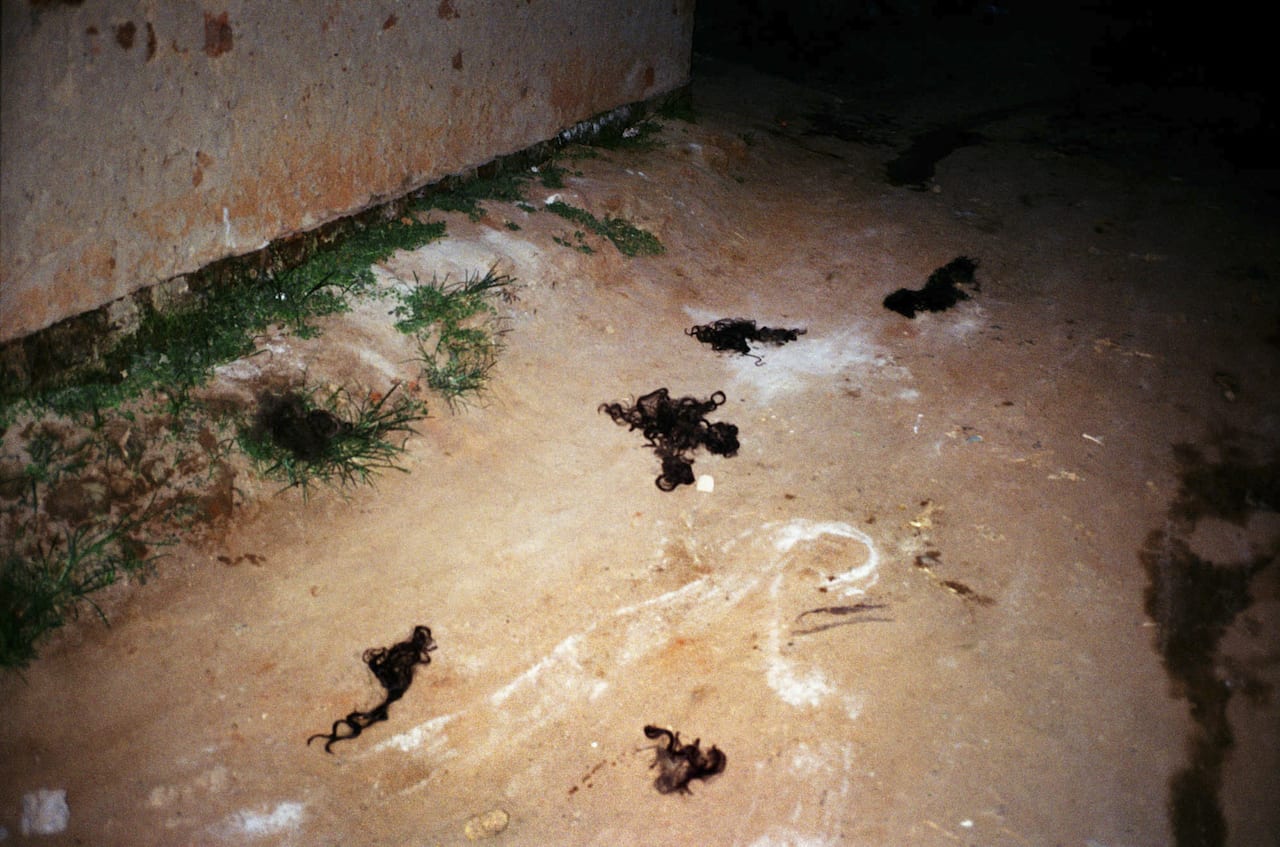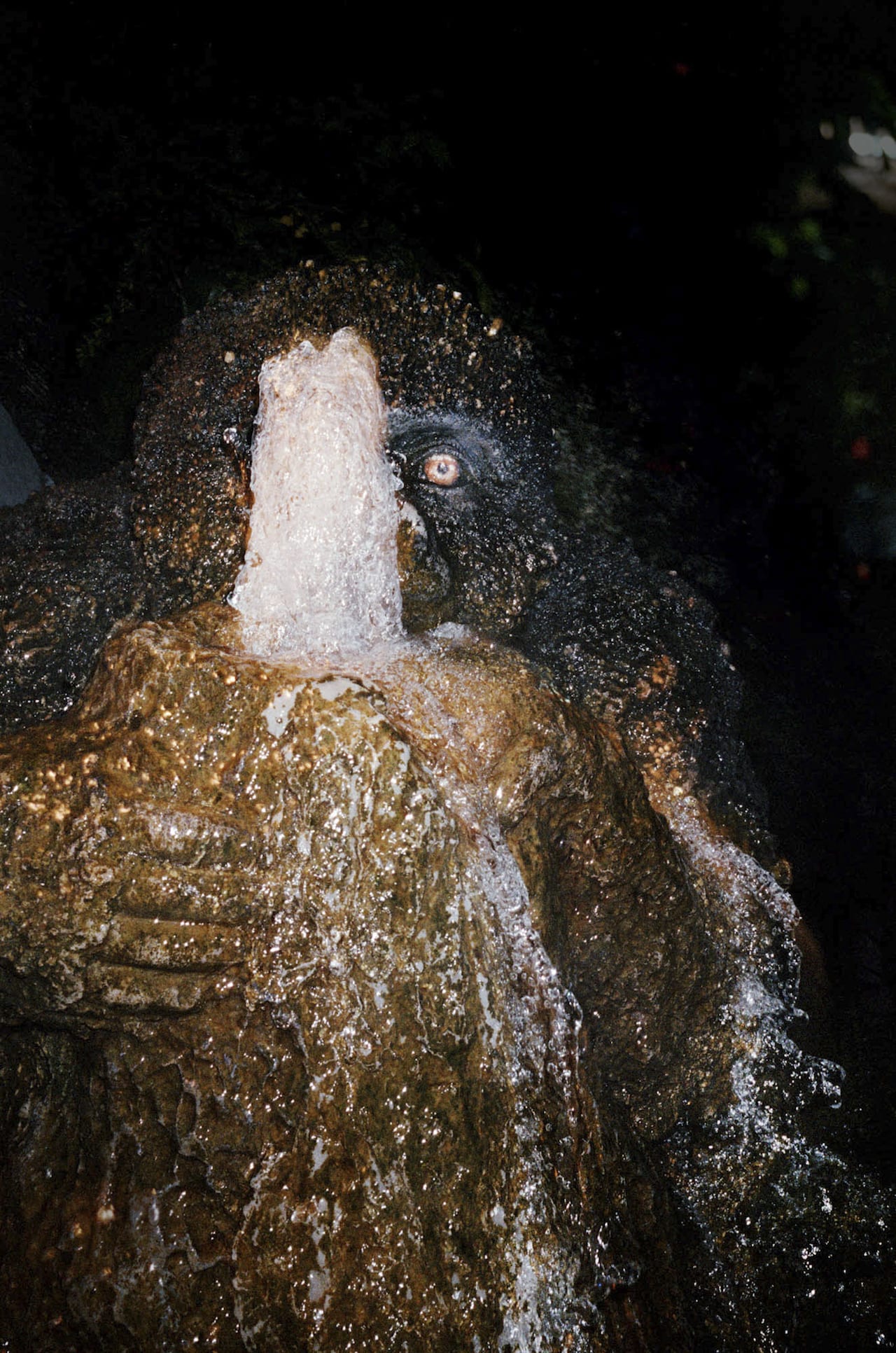Late in 2010, Michele Sibiloni left the sleepy town in the Emilia Romagna region of Italy where he had lived all his life and moved to Kampala in Uganda, a city eight times larger. He had come to cover the lead up to the 2011 general election in the country, which many had predicted might depose its leader, following the lead of the Jasmine revolution in North African countries. But, despite the jitter, all Sibiloni witnessed once the voting had ended was the swearing-in of President Yoweri Museveni for his fourth term in office since he helped overthrow Idi Amin in 1979.
Even so, Sibiloni was hooked. “It’s so different to where I come from,” he tells me, by telephone from his apartment in Kampala. “At the beginning I found it really chaotic, but the more time I spent here, and the more I got to know about the surrounding region of East Africa, the more fascinated I became. In fact, I got really excited.”
It’s taken many attempts for us to connect, not least because he had to dash off and cover a coup in neighbouring Burundi. Sibiloni often works like this, using his base in the Ugandan capital to cover stories in Congo, Rwanda and Kenya for news agencies throughout the world, but it’s Kampala he fell in love with. A year after the elections, his girlfriend moved over too.
Now 34, he loved to go clubbing when he was a teen, driving miles out of Parma to attend illegal raves. It must still be in his blood, because when, after two years in Kampala, he began to feel frustrated with his photographs, he turned to the city’s nightlife for sustenance.
“I’d been doing all this reportage and news, and I just didn’t see myself in the pictures at all,” he explains. “I wasn’t taking these photographs because I liked the subject, and it was always for someone else, a client. After a while it wore me down.”
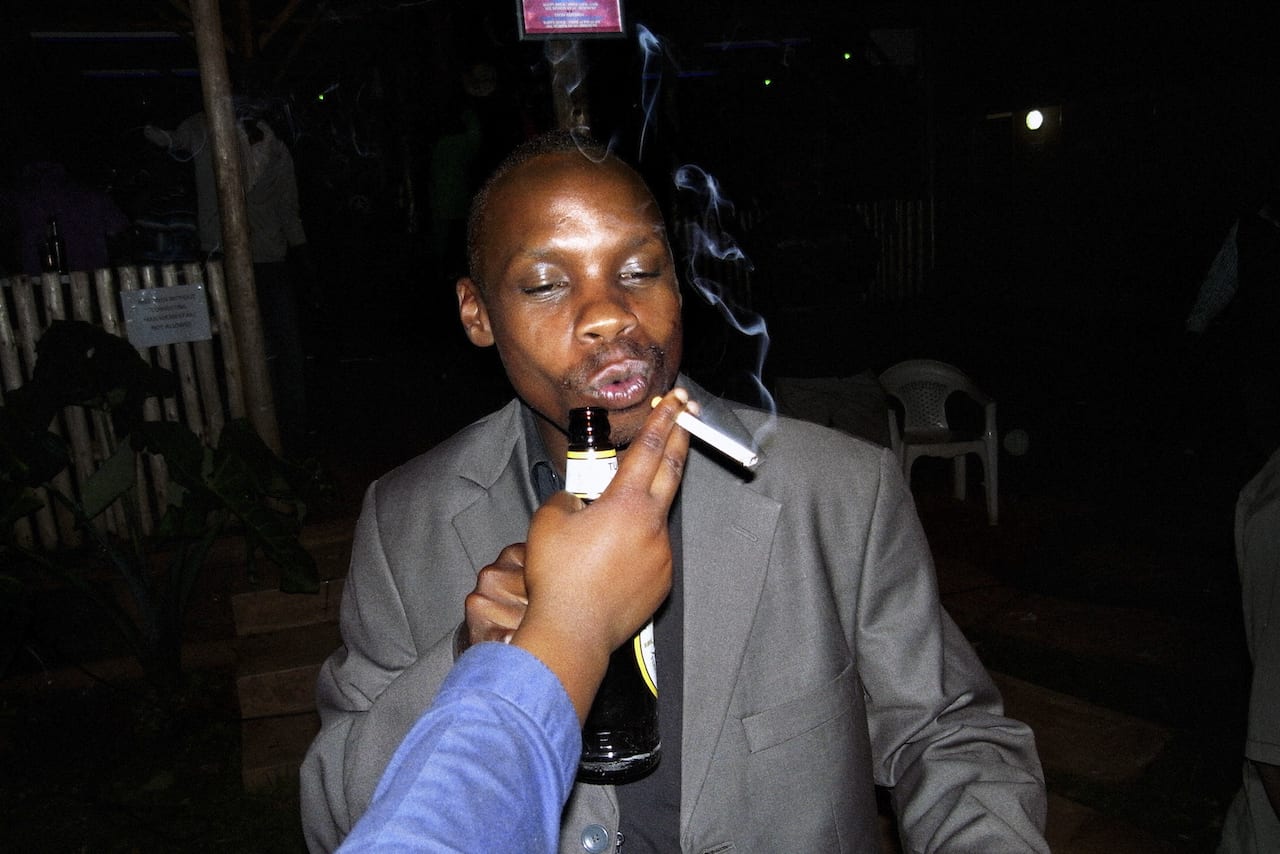
In 2013, he decided to try to focus on what had struck him so forcefully when he first arrived in Kampala – the nightlife. “Kampala has a vibrant night scene; there are a huge number of people moving through the city 24 hours a day,” he says. “From the beginning I enjoyed taking part in that, and not having to be at work in the morning every day… I felt very free.”
With only a nebulous idea in his head, Sibiloni started photographing the many night guards on duty throughout the city, stopping off at a bar here, a club there, along the way. Very quickly, he realised his experiences in between the portraits were more interesting, and he began shooting what he calls his “night adventures”.
“I would document the night in different places,” he says, “going from bar to bar, in the ghettos, to parties with expats, night churches, photographing every kind of activity that happened at night. I was really committed. Somehow it was an excuse to go out and enjoy myself, but also to enjoy taking pictures again.
“It was really good for me because my subject was very accessible, just outside my home – I didn’t have to catch a plane to get there, I didn’t have to have any money. It was perfect.”
The pictures he has amassed will soon be published as a book. When we speak, he’s still in negotiations with publishers and tinkering with the layout, but the bones are in place. The sequence is quite magical – a crazy journey through a crazy city, the accompanying essay quoting a Peace Corps blogger who described Kampala as “Tijuana on acid”. It’s dirty, disturbing, psychedelic, wicked, seedy, sickening and sometimes very witty – and partying is big business.
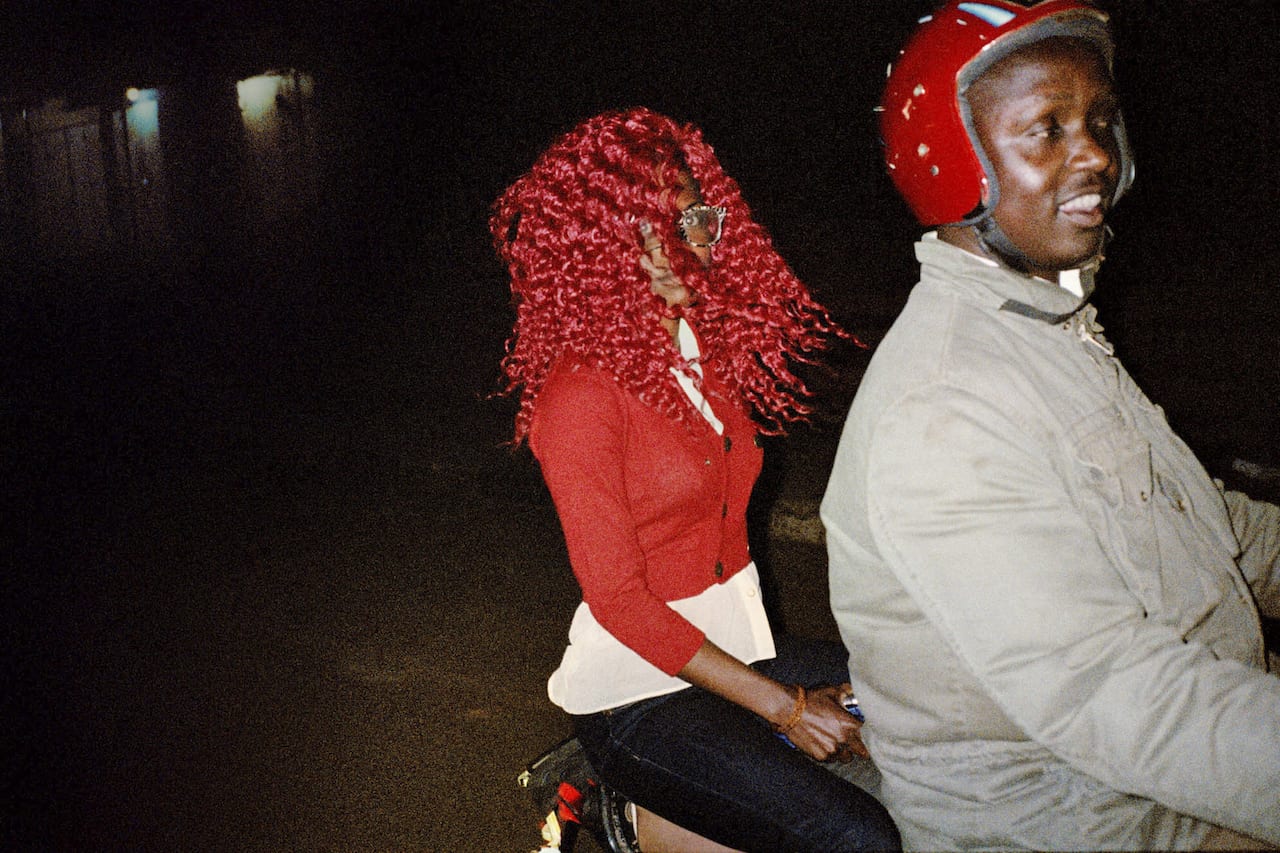
Kampala has come a long way since Idi Amin’s state-sponsored killing spree of the 1970s and the ensuing civil war and economic devastation of the ’80s. Today it is one of the most dynamic cities in East Africa, full of street markets and beautiful gardens, grand embassies and boutique hotels. There are as many roped- off restaurants and swanky bars as dive-like shebeens, and all of them are full of people drinking, drinking, drinking.
“Alcoholism is a real problem here,” says Sibiloni. “Uganda is one of the biggest – if not the biggest – consumers of alcohol in Africa, and it’s not just rich people and expats in bars. Even poor people, who have zero cash, drink. On the streets they sell spirits in plastic bags to make it cheap. It’s gin and rum, but really awful stuff with awful names like ‘Chief ’ and ‘Boss’. You see it everywhere, and the women drink as much as the men.”
Drugs are less ubiquitous, he says: “A lot of people smoke [marijuana], but cocaine and heroin, those are things that only happen in certain places. It’s more for upper-class people.”
Sibiloni’s book is titled Fuck it, a phrase he found – and photographed – tattooed on a woman’s leg on one of his nights out. “For her, it was definitely a sexual statement, and although I wanted to get this aspect of nightlife across – they are absolutely sex-obsessed in Kampala – for me, it came to stand for many other aspects of the experience of living here,” he says.
“There are a lot of expats, for example, and so Fuck it was more about escape, in that you might want to leave something behind back home, a family situation, or your life more generally,” he continues.
“It’s also appropriate for the way that people tend to forget about their day life at night, their responsibilities, so it’s like saying, ‘Let’s forget about everything for now.’ And I think there’s a real democracy at night that just doesn’t exist during the day. It doesn’t matter if you’re poor or rich, black or white, we all need to think, ‘Fuck it’, to dodge, every once in a while.”
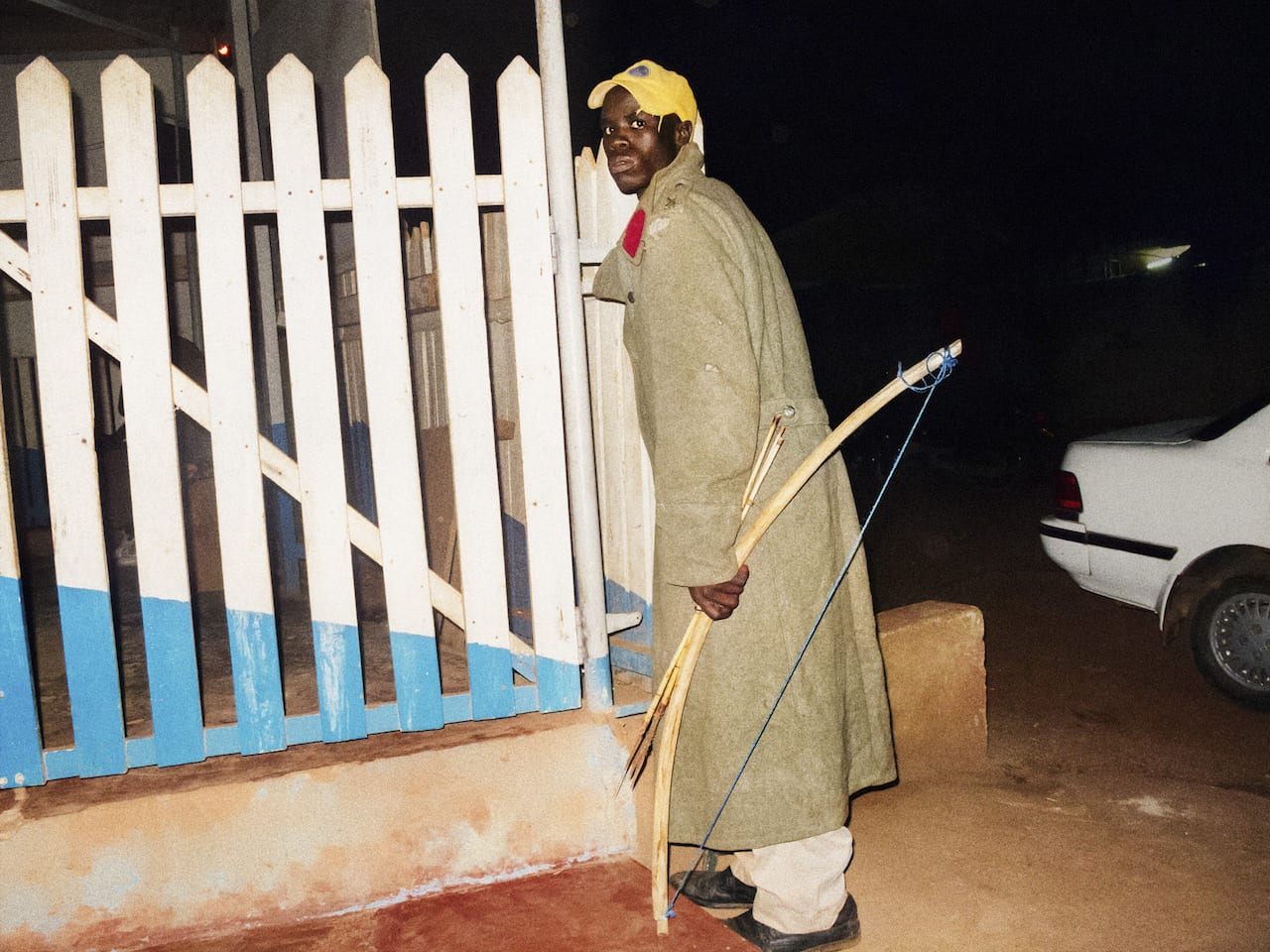
Sibiloni took his camera out with him every night and found that a small-film model worked best. “Mostly, that was so they couldn’t see the picture I had taken, they couldn’t delete it if they didn’t like it,” he says.
“But I think if people see that you’re using film, they feel less threatened. For some reason people don’t mind seeing themselves on a print as much as they do on a screen.”
Gossip magazines are huge in Uganda, and their salacious photography also made Sibiloni’s subjects wary. “[The magazines] publish dirty pictures of people in clubs, with fake stories; if people see anyone with a camera they’re frightened,” he explains. “In some clubs you’re banned from taking pictures altogether.”
He had to play the long game instead, gaining people’s trust by “basically being out, all the time, always with my camera”. “After a while they’d let me take pictures,” he says.
“Sometimes people still complained, but the Ugandans are not violent. The worst that happened was being kicked out by a bouncer – no one ever attacked me. Generally, the more time I spent out in the street taking pictures, the more I felt that was my duty as a photographer, that I had a right to do it. As a journalist I even have permission from the government.”
He has also felt very safe in Kampala. “It’s like a big village, really,” he explains. “It’s not like other cities in East Africa. In Kigali [Rwanda], for example, it’s very secure but super-rigid, so you can go out and there are street lights everywhere and nice roads; it’s full of police, but the bars and clubs close at 10 because they don’t like noise.
“Nairobi [Kenya] is the opposite; it’s a really dangerous city, with a huge amount of crime, so you don’t have the freedom to move around – you’d have to take a taxi, or stay in a particular area.
“In Kampala, you do what you want, you go where you want, everyone smiles. There is crime, of course, but if they rob you, they do it ‘nicely’ – they’ll come to your home when you’re out rather than stab you with a knife. I think it’s unique. I’ve had more freedom here than I’ve had anywhere.”
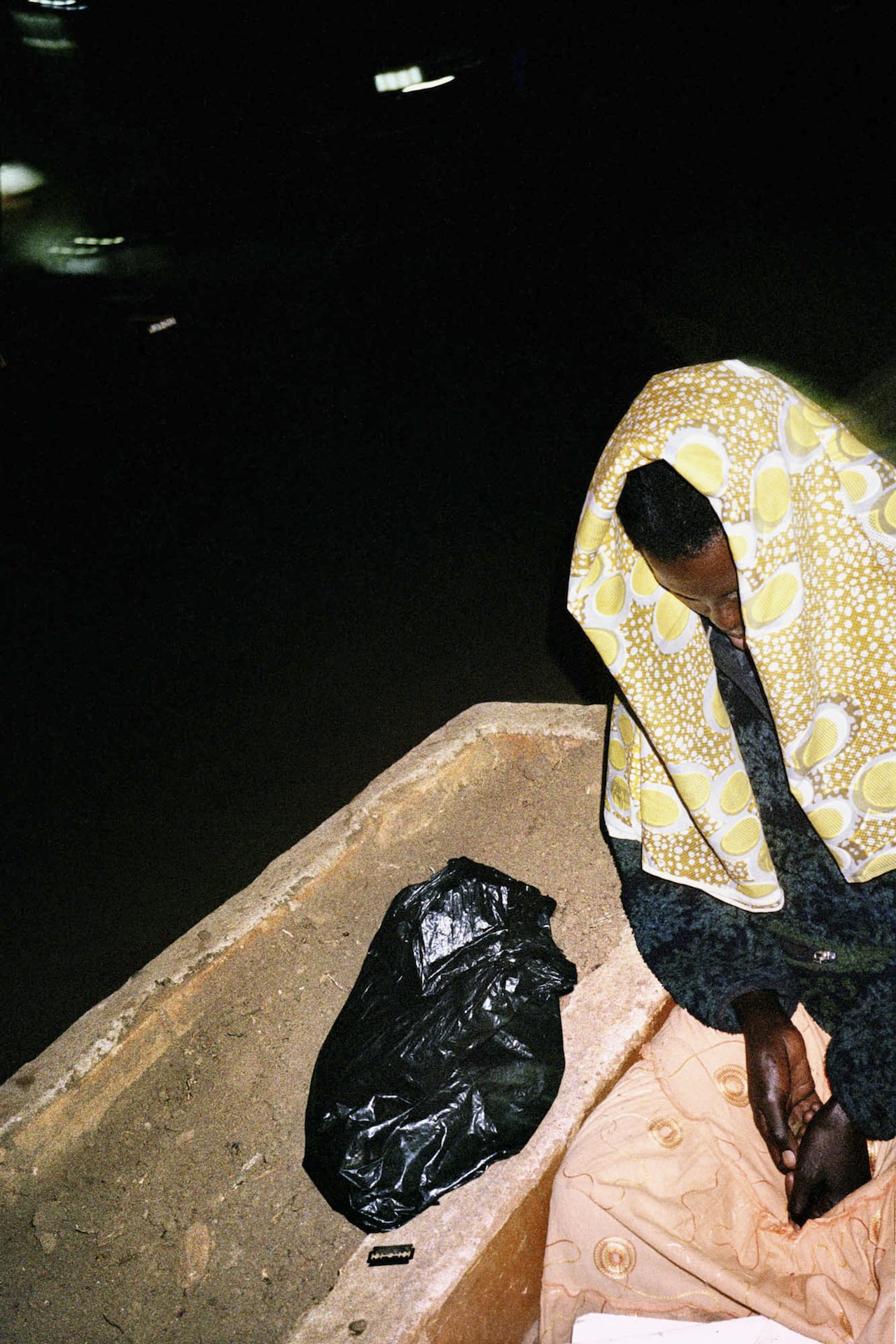
He says he’s seen crime rise since he came to Kampala, and that the city now has a real mafia problem, with attendant bribery and corruption. “You always see police when you go out – I photographed some – [but] they’ll often protect these gangs of thieves by pretending to arrest people who have nothing to do with the robbery, then forcing them to pay a bribe to get themselves out of jail.
“It’s really shady, but it’s only because they’re paid so little. They don’t even ask for much money from the people they’re blackmailing, just a few dollars.”
Sibiloni’s images present a very fresh vision, and deliberately so, as he was keen to avoid conforming with stereotypical views of Africa. Uganda might have rolling hills, crater lakes, charity villages and ‘Big Five’ safari opportunities, he points out, “but it also has this incredible other life – all this stuff going on that we know nothing about, maybe because we don’t care to, but maybe also because no one has photographed it.”
He shot both black-and-white and colour, and has also deliberately mixed them up. “To begin with, that was because I didn’t really know what I was going to do, so I was trying lots of things. But as time went on it became part of this larger ethos I had, something I tried really hard to sustain, which was that the project should have complete freedom to do and be anything,” he says.
“I didn’t want any rules and I tried to do everything in the most instinctive way that I could, without thinking, without any technical stuff. I wanted to escape traditional reportage, escape everything. As long as the picture was framed in a good way and exposed properly then it stayed. And actually, when we came to put the book together, having black-and-white, colour, different looks, it all worked.”
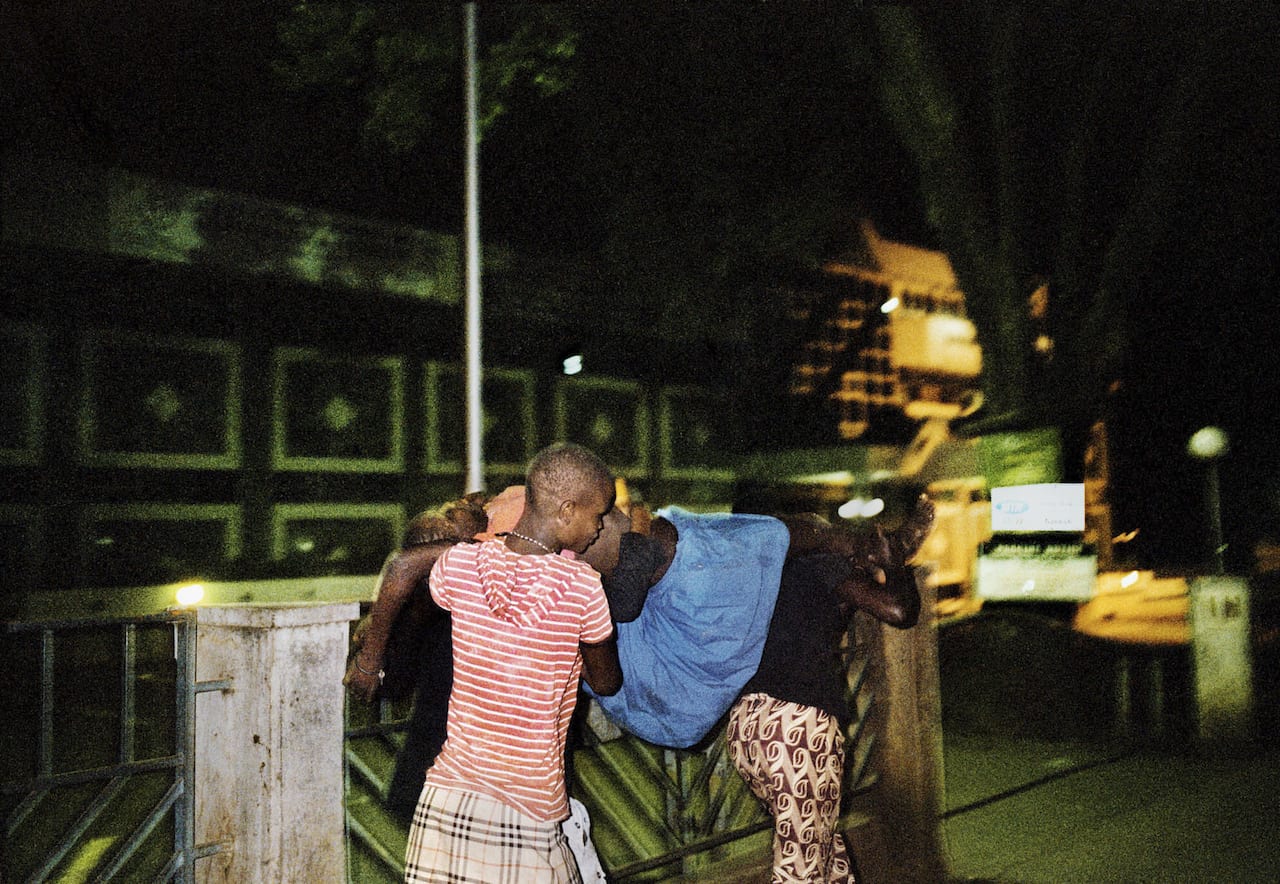
Kampala’s nightlife begins around 9pm, when revellers start congregating in bars. At about 10.30pm they go off to clubs to dance, says Sibiloni, to music that runs the full gamut – from traditional local stringed instruments to reggae and pop. Certain areas generated better pictures than others, and Sibiloni found himself taking a lot in and around a club called ChooChoo.
“It was owned by this man from Switzerland, and so every night a lot of middle-aged European men would come and hang out there,” he says. “That makes it a good spot for the night girls too – sometimes they get paid to dance, even to strip, if there’s a private party.”
I ask if he was ever shocked by what he saw and he says he got used to it pretty quickly – with occasional exceptions. One night he was on his way home when he saw a group of teenagers carrying what looked like a dead body, for example.
“I took a picture, but then I was worried so I stopped the taxi and asked if he was alright,” he says. “Of course, he was just drunk. It was quite surreal.”
Some of the images come from another angle altogether, but share this dark, slightly sinister edge. There’s a photograph of three cranes, ghostly white in the dark, for example, that is both a metaphor for the country and a terrible paradox.
“They’re the symbol of Uganda, and a symbol of prosperity and serenity, but people keep them as pets,” explains Sibiloni. “They cut a nerve so they can’t fly, and keep them in their garden.”
Another image shows broken hair extensions discarded in the street, and seems somehow horribly macabre. “I liked that image because you don’t know how they got there,” says Sibiloni. “It could be someone had a fight, and they were yanked out, or maybe someone was drunk and just took them out and threw them on the floor. All the girls wear them.”
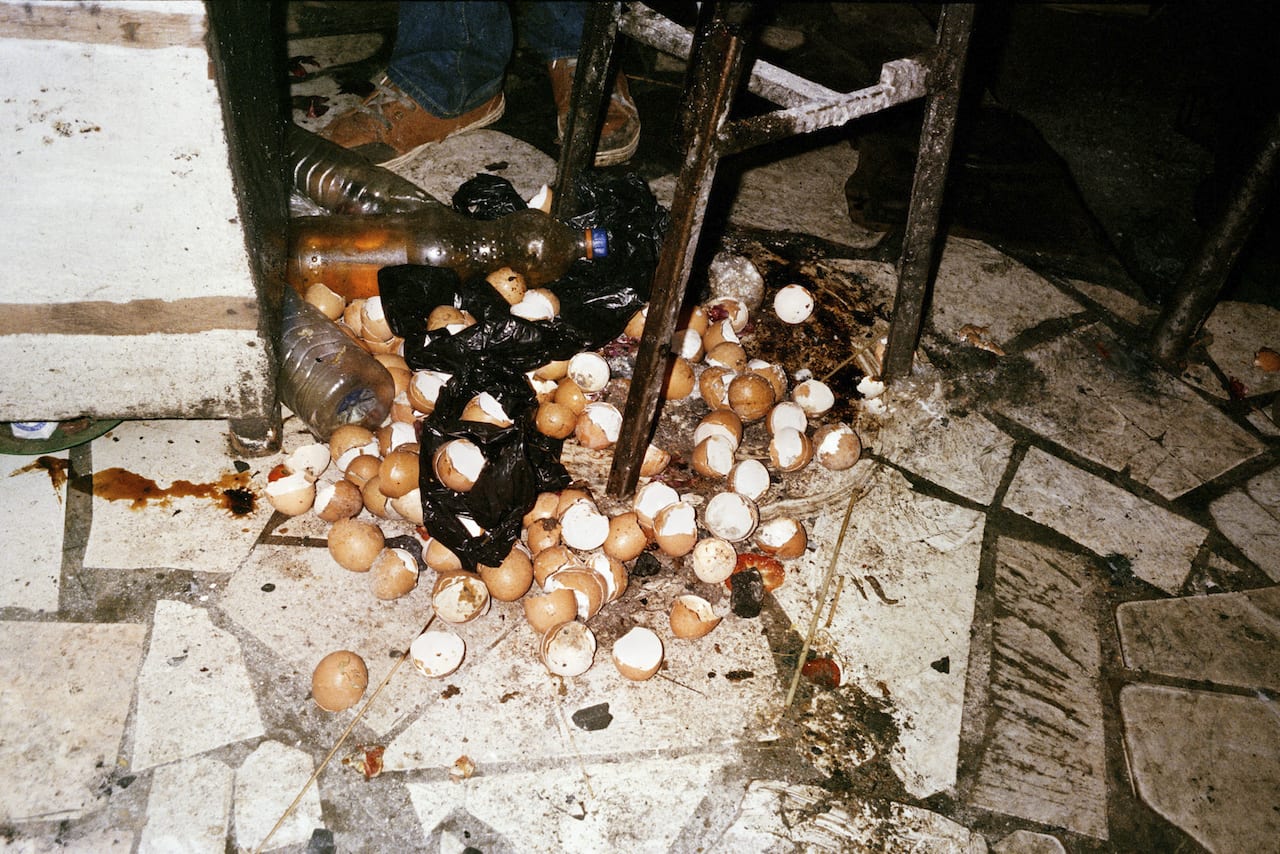
Another photograph shows a jumble of broken eggs among gritty, greasy detritus – it’s revolting, and I assume it’s another metaphor, but Sibiloni denies it. “It’s just another part of the night adventure,” he says. “After drinking, everyone eats these sort of chapatis, like a round bread, with an omelette inside. They roll them up and they call them ‘Rolex’, like the watch.”
It makes for queasy viewing and, despite the high jinks, there is a melancholy counterpoint running through Sibiloni’s series. “Some nights I was out and it was all fun and happy; other times, it felt really sad,” he says. “I wasn’t looking for either of those things in particular.
“Sometimes I’d be out, and it would be late, and I’d be tired, and thinking, ‘Maybe I’m doing this too much, I’m spending too much time just wandering about, waiting for things to happen,’” he continues. “But then I would see something like those boys carrying their drunk friend, and I would think, ‘No, I made the right decision.’
“It pays to be committed, to always be out on the hunt for the image, because you’re always rewarded. That’s how the good luck comes out.”
Recently he’s taken his night adventures in another direction, focusing on grasshopper hunting, which also happens between dusk and dawn. “At the end of rainy season, when the grasshoppers come, they put out these special traps with very strong light bulbs,” he says.
“They make fire, which creates a huge cloud of white smoke that attracts the grasshoppers. They get dizzy and bounce off a metal sheet and into these drums to be taken into town and sold to cafes and bars, to be fried and eaten – they’re a delicacy in Uganda.”
But as for the clubs and bars, he thinks he’s finished with that for the moment. “I’ve basically been going out every night for the past two years,” he says. “I’m really tired.”
Fuck it by Michele Sibiloni is published by Edition Patrick Frey, priced €43. www.editionpatrickfrey.com/en/books/fuck-it-michele-sibiloni
Michele Sibiloni’s series Nsenene Republic, 2014–2018, a study of grasshopper catchers in Uganda, has been shortlisted for the Contemporary African Photography prize www.1854.photography/2018/03/capshortlist/
This article was first published in the August 2015 issue of BJP, a special issue looking at images and music www.michelesibiloni.com
